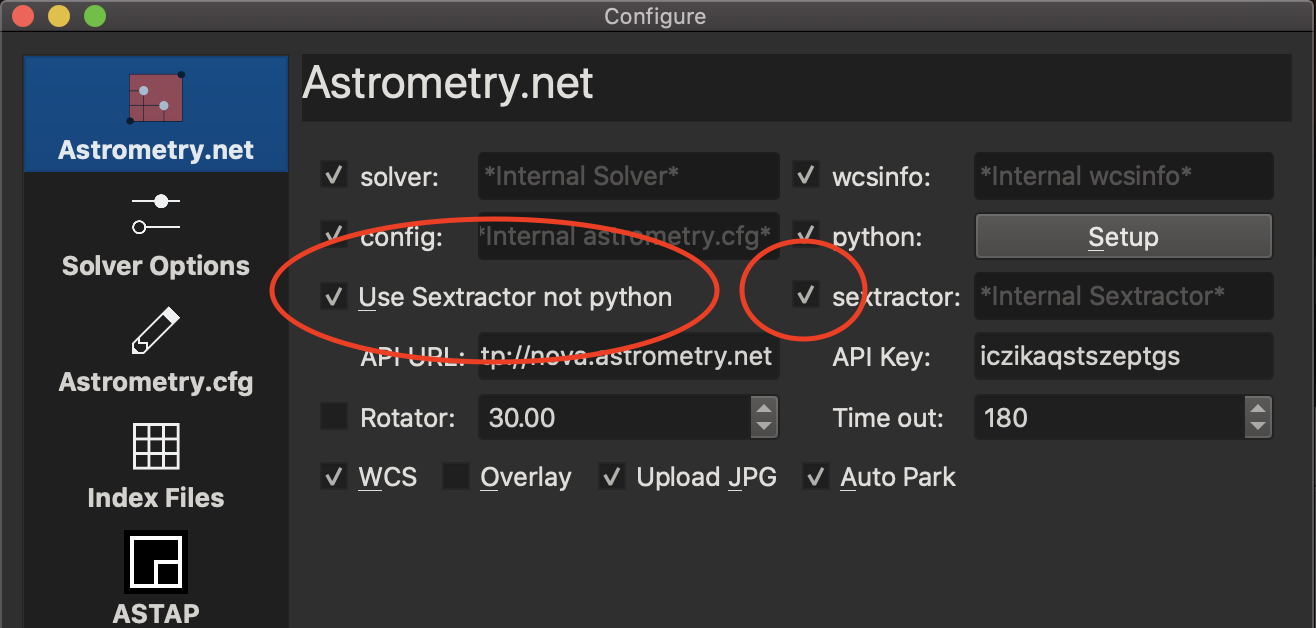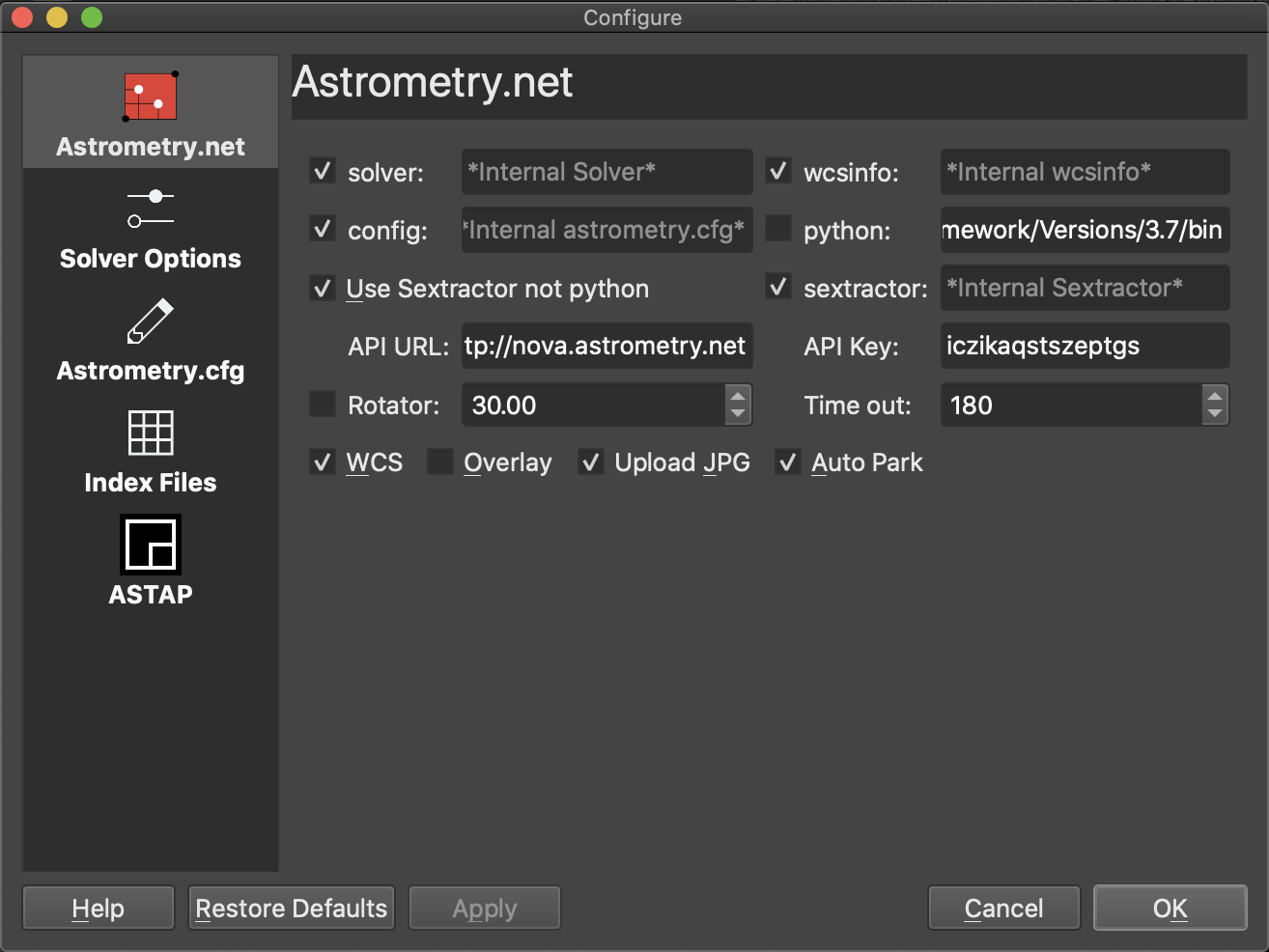INDI Library v2.0.7 is Released (01 Apr 2024)
Bi-monthly release with minor bug fixes and improvements
Re:KStars Mac DMG 3.4.0 beta testing needed
- Rob Lancaster
-
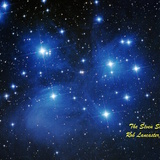 Topic Author
Topic Author
- Offline
- Supernova Explorer
-

- Posts: 2877
- Thank you received: 812
Replied by Rob Lancaster on topic KStars Mac DMG 3.4.0 beta testing needed
I did some experiments last night with the issue you reported in a virtual machine with python3 installed in different ways to see why python3 sometimes is not working properly with astrometry.net to plate solve. Another user, who also installed non-homebrew python3 has reported a similar issue in this bug report:
bugs.kde.org/show_bug.cgi?id=405437
, and we were trying to diagnose it there too. In both cases, we did a number of experiments but couldn't find the problem. I decided to try a different approach. It was much easier for me to diagnose the issue in a virtual machine. I will post what I found last night in both places.
The problem:
The issue happens when the user has installed non-homebrew python. Python3 is installed properly, the site packages include astropy and numpy, it can find the site packages, the correct python3 is first in the PATH variable, KStars is installed correctly, and NOTE this is not the "illegal argument exception" caused by running software compiled for a newer computer on an older computer. But when the plate solve is run, it gives an error message which means it can't find astropy. When run from the command line, it gives the same error!
My finding:
It seems to me that the issue is that the calls to python astrometry.net are making use the name python not python3 when the calls are made. OS X has a python2.7 installed by default that is used by the system and should not be changed. Python3 is installed in various ways and could be in different locations. All the different python versions that I tested last night put a simlink in /usr/local/bin for python3 to redirect calls for python3 to wherever python3 is installed. There is not a simlink to python put in that location because the assumption is that if you call python, you want python2.7 to run the code and if you call python3, you want your self installed python to run it. I ran into this issue before with the homebrew python, and it gave me big headaches before, but later I found that there was a folder homebrew made called /usr/local/opt/python/libexec/bin where there actually was a simlink placed from python to the homebrew python3 and if I put that in the path, it automatically fixed the problem! I had assumed that the other versions of python would have a similar folder and you could just put them in the PATH variable and it would work. I was surprised last night when I didn't find a python simlink in /Library/Frameworks/Python.framework/Versions/3.7/bin (or similar folder for other installation), nor did I find anything in /Library/Frameworks/Python.framework/Versions/3.7/opt. So thus even with that folder in the PATH, it still called the system python whenever python was called for.
Now that I think I know what the problem is, I should be able to come up with a way to fix it for non homebrew pythons. Just to verify, can you check for symlinks to python (not python3) in your /usr/local/bin folder, your /usr/local/opt/python/libexec/bin folder, and in whichever python3 bin and opt folder you would currently like to use (for example: /Library/Frameworks/Python.framework/Versions/3.7/bin and /Library/Frameworks/Python.framework/Versions/3.7/opt). If none of those folders contain a file or simlink called python, I think we have found the python3 issue.
Please Log in or Create an account to join the conversation.
- Rob Lancaster
-
 Topic Author
Topic Author
- Offline
- Supernova Explorer
-

- Posts: 2877
- Thank you received: 812
Replied by Rob Lancaster on topic KStars Mac DMG 3.4.0 beta testing needed
Please Log in or Create an account to join the conversation.
- Rob Lancaster
-
 Topic Author
Topic Author
- Offline
- Supernova Explorer
-

- Posts: 2877
- Thank you received: 812
Replied by Rob Lancaster on topic KStars Mac DMG 3.4.0 beta testing needed
Please Log in or Create an account to join the conversation.
Replied by Michael on topic KStars Mac DMG 3.4.0 beta testing needed
as I might be the reason for that not home-brew python3 install, just to try to help in this area. OS X might also go away from python 2.7 in future as they stated, that they don't like to support other frameworks than their own from a fresh install. Things might get more complicated, because if you have an "old" system running (with python2.7 installed) and update to a newer OS X release, the python might be still there, but for a brand new computer, it won't be installed from scratch on.
As I did some work with astrometry.net on three different platforms (mac, win, linux) things improved, when staying with the official python.org installer. For the software I'm developing (MountWizzard), the situation lead for astrometry.net to call the executables from the python program directly. You only need two binaries for doing plate solving. All other stuff could be omitted. In result you don't need any python, if you arrange the two tasks: star extraction (from fits to *.xy file) and solving (from *.xy file to coordinates). Yes you might loose some parameters to set, but I found this not really restrictive for users. If you would like to experience this way, please let me know. I try to explain how I did this. As result I don't care even on OS X about the python versions installed as I don't need them.
Another solution is ASTAP (OK, it's not astrometry.net, and it does right now not calculate distortion parameters), but installation on multiple platforms is easy.
Michel
Please Log in or Create an account to join the conversation.
- Rob Lancaster
-
 Topic Author
Topic Author
- Offline
- Supernova Explorer
-

- Posts: 2877
- Thank you received: 812
Replied by Rob Lancaster on topic KStars Mac DMG 3.4.0 beta testing needed
Please Log in or Create an account to join the conversation.
Replied by Michael on topic KStars Mac DMG 3.4.0 beta testing needed
I still use the image2xy as provided in the astrometry.net package (as I don't want to take care of managing all the libraries attached to the binaries) and than solve-field. That's it. So far I did not had any issues. One hint: I looked around the last hour how things are made in different packages and the the Astrometry package including astrometry.net which is provided by cloudmakers (many thanks for that really nice package and all the support for Mac's !!!) also does not use python, but just calls image2xy and solve-field.
Michel
Please Log in or Create an account to join the conversation.
- Rob Lancaster
-
 Topic Author
Topic Author
- Offline
- Supernova Explorer
-

- Posts: 2877
- Thank you received: 812
Replied by Rob Lancaster on topic KStars Mac DMG 3.4.0 beta testing needed
astrometry.net, avoiding any use of python whatsoever. It doesn't use numpy, image2xy, or anything else. Just Sextractor and astrometry.net. Note that, this version of KStars is still fully functional and still
contains the ability to solve with python. It just also includes an option to avoid python.
Please test this on a system that has python issues like the ones I have been trying to help people with on the last week.
www.indilib.org/jdownloads/kstars/beta/kstars-3.4.0-beta3.dmg
In order to turn off the usage of python, you will need to configure astrometry.net like this:
Please Log in or Create an account to join the conversation.
- Andrew Burwell
-
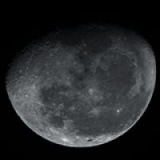
- Offline
- Platinum Member
-

- Posts: 527
- Thank you received: 139
Replied by Andrew Burwell on topic KStars Mac DMG 3.4.0 beta testing needed
Please Log in or Create an account to join the conversation.
- Jasem Mutlaq
-

- Away
- Administrator
-

Replied by Jasem Mutlaq on topic KStars Mac DMG 3.4.0 beta testing needed
Please Log in or Create an account to join the conversation.
- Mimmo Belli
-
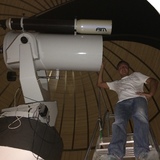
- Offline
- Senior Member
-

- Posts: 42
- Thank you received: 0
Replied by Mimmo Belli on topic KStars Mac DMG 3.4.0 beta testing needed
If that's okay, I can try Simulator mode,
I also wanted to ask you two questions:
1) Have you read my post where I speak of being able to do before the alignments with the computer of the mount? What do you think about it?
2) I did not understand the discourse of turning off rotation.
If you refer to the item rotate in the Astrometry.net options,
where by default there is the number 30, I have always kept it off. Am I wrong?
I'll also make you a third:
since this works for me, isn't it that trying the new settings of the new version I can have problems?
Thank you.
Please Log in or Create an account to join the conversation.
- Rob Lancaster
-
 Topic Author
Topic Author
- Offline
- Supernova Explorer
-

- Posts: 2877
- Thank you received: 812
Replied by Rob Lancaster on topic KStars Mac DMG 3.4.0 beta testing needed
1. I don't think you need to do alignment stars before plate solving. I never do that now that I plate solve. I use the plate solves as the alignment points.
2. I don't know about turning off rotation? I think my last suggestion to you was to use "sync", not "slew to target." I might have forgotten?
3. I don't know about the rotator option. I also have kept it off, I don't have a rotator for my telescope so I haven't even thought about that option.
4. Nope, trying out the new setting of using sextractor will not hurt your setup, you can always change it back to whatever you were using before. My addition of the new setting doesn't break the old functionality.
Please Log in or Create an account to join the conversation.
- Andrew Burwell
-

- Offline
- Platinum Member
-

- Posts: 527
- Thank you received: 139
Replied by Andrew Burwell on topic KStars Mac DMG 3.4.0 beta testing needed
After installing and setting the new sextractor preferences, it solved the simulation image immediately. Very fast. Then I tried loading an image from my EdgeHD 11 scope, and it failed. So I stopped the server, went into the preferences and set the scope to the Edge so that it would have any focal length info it needed, and tried solving again, and it failed. Then I tried the simulation image again, and that failed too with the Edge set as the scope.
Here's the logs and screen of my settings.
Please Log in or Create an account to join the conversation.

